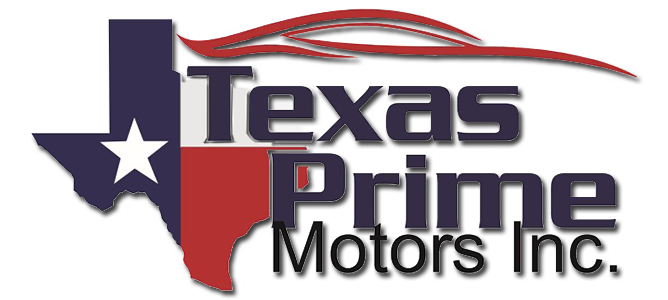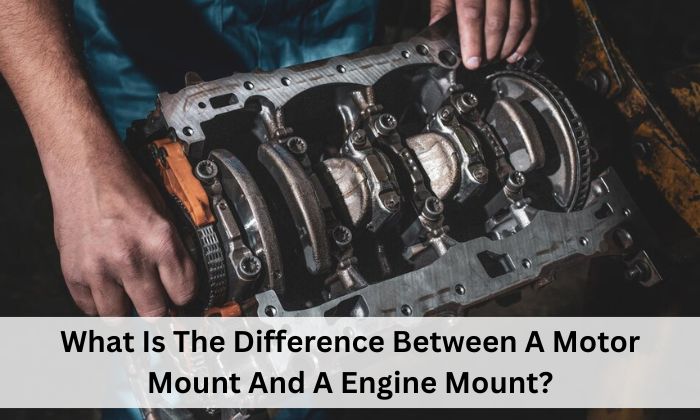Motor mounts hold engines to frames. Engine mounts attach engines to vehicle frames. Engine mounts and motor mounts decrease engine vibrations. Most motor mounts are cheaper than engine mounts. There’s much more to learn. This article covered the issue as much as possible.
Quick Comparison: Motor Vs. Engine Mount
Motor and engine mounts differ significantly. First, the following is a quick table of these differences:
| Factors | Motor Mount | Engine Mount |
| Purpose | To connect the car engine to the frame and stabilize engine vibration | To absorb and transfer transmission-related vibration |
| Location | 1. Between the engine and the frame2. For Front Wheel Drive: Perpendicular to the vehicle’s centerline3. For Rear Wheel Drive: Sides of the engine | 1. Perpendicular to the vehicle’s centerline2. On the sides of the engine |
| Material | Rubber and metal | Urethane or rubber |
| Symptoms of Failure | 1. Excessive lurch while starting2. Noise coming from engine bay2. Visual signs of wear | 1. Excessive vibration while driving2. Noise when shifting gears3. Misaligned chassis |
| Consequences of Failure | 1. Engine will be damaged2. Fan belts and radiator hoses will be damaged3. Cause safety hazard | 1. Difficulty in controlling car2. No power to wheels3. Transmission will slip |
| Lifespan | 5-7 years | 60000-100000 miles |
| Replacement Cost | $50-$200 | $264-$292 |
A Comparison Of Motor And Engine Mounts
Both motor and engine mounts decrease vibrations, although they vary. The table highlights the main topics. Expand on them.
Purpose
Motor mounts attach the engine to the automobile frame. Internal and exterior engine vibrations occur continually. The motor mount isolates these shocks to protect the engine and components. Along with motor mounts, engine mounts reduce torque-related vibration and shock. This allows the engine to run smoothly.
You should also know the finest engine. Engine mounts also keep vehicle connections in place. The engine is linked to the driveshaft and engine. It aids engine assembly. The driveshaft boots’ correct angle is also supported. This protects the axle joint from water and pollution.
Location
Motor mounts separate the engine and frame. Thus, the mount absorbs automobile vibrations and protects the engine. Some automobiles have three to four motor mounts, which the user handbook pinpoints.
Vehicles have various engine mount locations. Locate it between the frame and the engine. SUVs, front-wheel-drive automobiles, and minivans have it perpendicular to the centerline. It’s on the engine sides for trucks and RWD automobiles.
Material
Rubber and aluminum form motor mounts. Different sides of the engine and automobile chassis are fastened to the metal. However, the rubber between adds flexibility. This prevents engine vibration from shaking the automobile. The mount binds everything smoothly and reduces vibration for more significant acceleration.
However, different motor mounts exist. They attenuate vibration using liquid oil instead of rubber. Solid steel and polyurethane mounts transmit vibration. Engine mounts consist of the mount and a bracket.
Steel brackets are typical. The mount uses rubber or urethane bushing. Chemically welded, bonded, and bolted to the bracket. In general, rubber or urethane isolates vibration and reduces noise. If one part breaks, the complete unit must be replaced.
Symptoms Of Failure
Bad motor or engine mounts have symptoms. The car lurches excessively when it starts. A steady vibration will follow this lurch. Clunks or bangs will come from the engine bay. This is because the engine moves more.
Inspection reveals flaking or fractures in the mount’s rubber. The metal may be corroded. Thus, the mount won’t work. A defective one will cause excessive steering wheel, seat, and floorboard vibration. Inadequate engine isolation from the automobile causes it.
Clanks and thumpings occur while changing gears and traversing bumps. The poor engine mount won’t retain the engine. The chassis will tilt. Steering issues and uneven tire wear may result. The automobile will pull one way.
The Effects Of Failure
Failure of the motor or engine mount will have dire implications. Lousy engine mounts can’t hold the engine. Thus, the engine may move. Therefore, it may damage the hose, bearings, and wirings. Vibrations no longer absorbed adequately will also stress other components. These severe vibrations will affect fan belts and radiator hoses. So they may shatter or strain.
All of these broken parts pose a safety risk. Bad motor mounts make driving risky. Bad mounts may cause engine vibration throughout the car. This might make the car shake and wear down other drivetrain components. A faulty engine mount might break the driveshaft.
So, engine power won’t reach the wheels. Your automobile will be immobile. One of the causes of engine failure. A broken engine mount may cause the engine to slide. Engine fluid will leak. Lower fluid levels cause engine slide. Don’t drive with a broken engine mount.
Lifespan
The motor and engine mount wear out like other parts. Motor mounts typically last 5-7 years. Still, check them often while repairing your automobile. Used, they may last less or longer. They should last 60000-100000 miles. Its lifespan depends on oxidation and vibration.
Replacement Cost
Bad mounts must be replaced. Steel or rubber mount replacement costs $10–150. This varies by car model. Complex hydraulic and active motor mounts cost extra. Mounts often cost $50–200.
The labor cost depends on how difficult it is to reach the mount. Between $150 to $450 is typical. Engine mounts typically cost $264–292. Parts cost $160, and labor is the rest. This cost excludes taxes and additional expenses. You may save money by replacing the mount yourself.
Conclusion
Motor and engine mounts must be distinguished to ensure a vehicle’s structural integrity and smooth functioning. Motor mounts hold the engine to the frame, while engine mounts stabilize it, damping vibrations and safeguarding other components. Checking and replacing worn mounts regularly prevents expensive damage and ensures safe driving.
FAQs
Should I Change All Engine Mounts At Once?
Unless All Engine Mounts Are Broken, Replacing One Is Enough. Mounts Seldom Fail Simultaneously.
Can I Replace The Motor Mounts Myself?
With the correct equipment and procedures, motor mounts may be changed DIY. However, support the engine during replacement to guarantee safety.
How Can I Tighten The Engine Mounts?
After load equalization and alignment, use a torque wrench for final adjustments. To correctly tension the nuts, use one wrench to hold the adjustment nut and another to tighten the lock nut.

